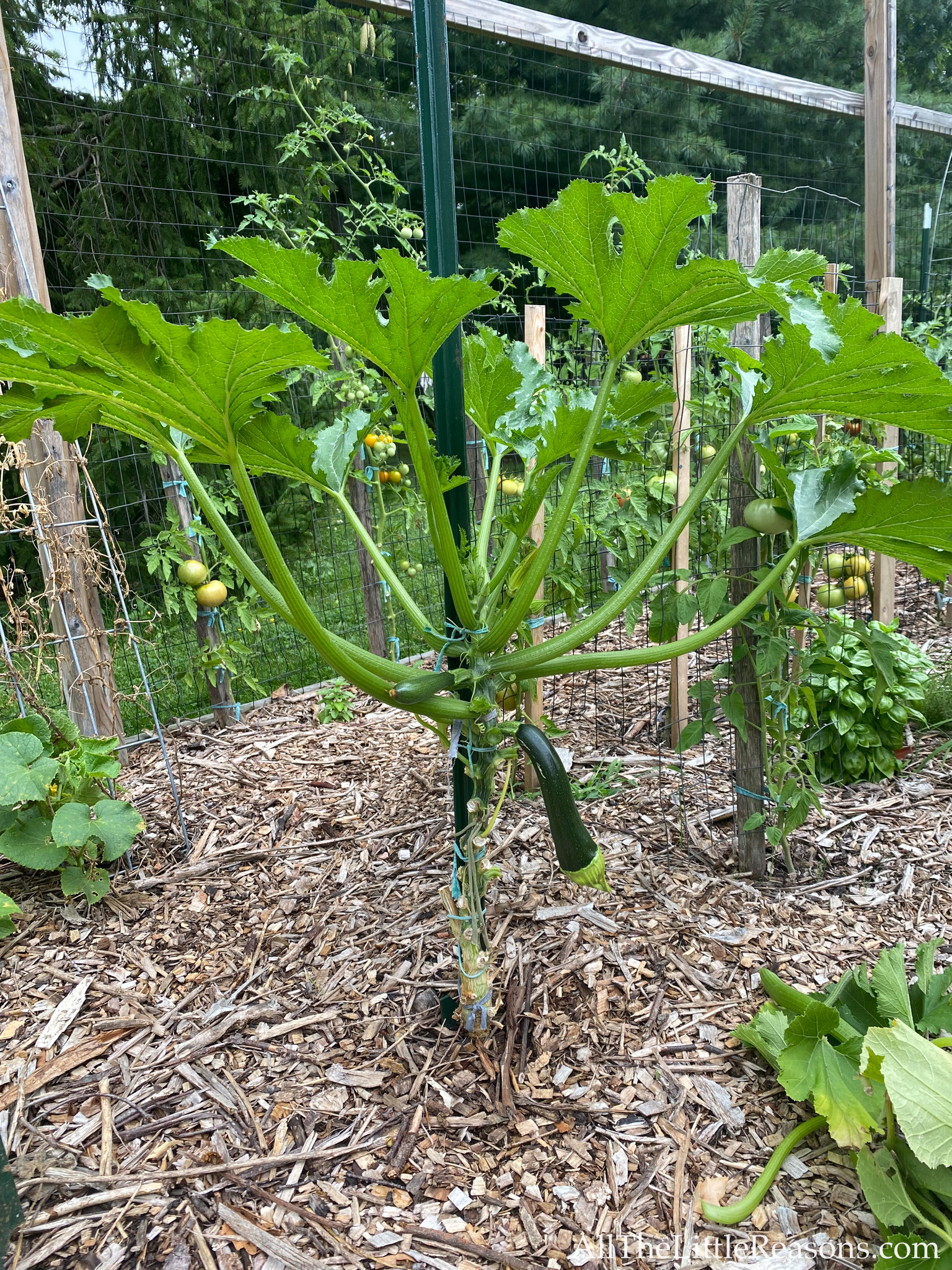To train zucchini to climb, use a trellis or support structure and gently tie the vines to it as they grow. Growing zucchini in your garden can be a rewarding experience, but sometimes space can be limited.
Thankfully, zucchini plants have a vine-like growth habit, which means they can be trained to climb upwards instead of sprawling on the ground. Training zucchini to climb not only saves space but also improves air circulation around the plants, reducing the risk of disease.
We will discuss the methods and steps to successfully train zucchini vines to climb, allowing you to maximize your vertical gardening space and produce an abundance of delicious zucchini. So, let’s dive in and learn how to train zucchini to climb using simple techniques.

Credit: www.rileysgarden.com
Benefits Of Training Zucchini To Climb
Training zucchini plants to climb offers several advantages:
- **Maximizes vertical garden space**: By training zucchini to climb trellises or supports, gardeners can make the most of limited space in their gardens. Vertical growth allows for increased plant density and more efficient use of available area.
- **Improves airflow and reduces disease**: By lifting zucchini off the ground, climbing enables better air circulation around the plants. This helps prevent the buildup of moisture and reduces the risk of fungal diseases.
- **Easier harvesting and maintenance**: When zucchini plants are trained to climb, their fruits are more visible and accessible. This makes it easier for gardeners to harvest the zucchini in a timely manner, leading to better productivity.
By incorporating climbing techniques in zucchini cultivation, gardeners can optimize garden space, promote healthier plants, and enjoy easier maintenance.
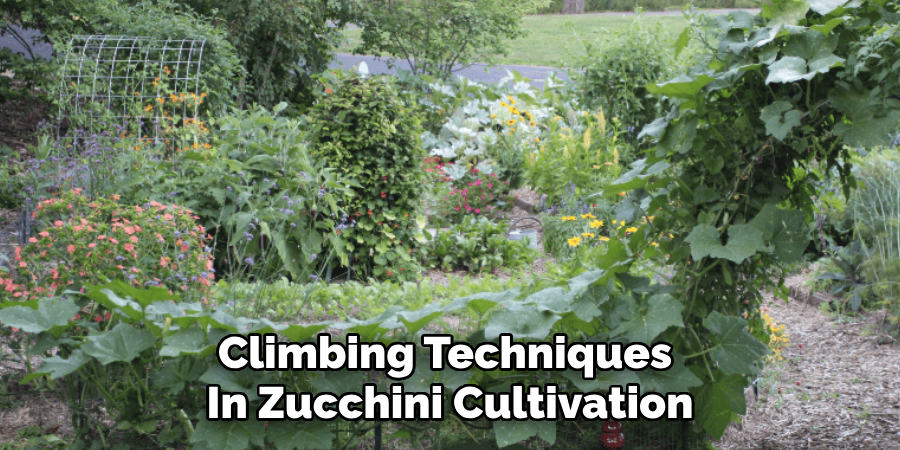
How to Train Zucchini to Climb: Step by Step Guide
Choosing The Right Varieties For Climbing
When it comes to training zucchini to climb, selecting the right varieties plays a crucial role in ensuring a successful outcome. By choosing climbing zucchini varieties, **you can maximize your garden space and create a visually appealing vertical garden**. But what exactly should you look for in climbing zucchini varieties?
Here are some key factors to consider:
| Consideration | Popular Climbing Zucchini Varieties |
|---|---|
| 1. Growth Habit | Black Forest, Tromboncino, Cocozelle Rampicante |
| 2. Disease Resistance | Costata Romanesca, Tatume |
| 3. Fruit Size | Italian Ribbed, Lebanese White Bush |
| 4. Taste and Texture | Zucchino Rampicante, Zucchetta |
By considering these factors, **you can choose climbing zucchini varieties that meet your specific preferences and garden requirements**. Whether you prioritize disease resistance, fruit size, or taste and texture, there are numerous options available to suit your needs.
When training zucchini to climb, keep in mind the advantages of choosing the right climbing varieties. **With careful selection, you can transform your garden into a vertical oasis** with abundant zucchini harvests.
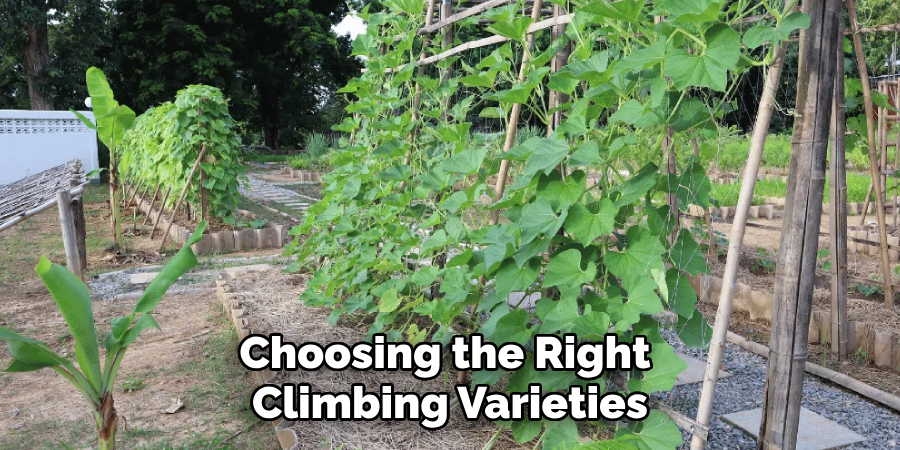
Selecting The Right Location
When training zucchini to climb, it’s crucial to choose the right location that provides ideal sunlight and soil conditions. Zucchini plants thrive in full sun, so find a spot in your garden that receives at least 6-8 hours of direct sunlight per day. Additionally, ensure the soil is well-draining and rich in organic matter. Zucchini plants require fertile soil to grow and produce abundant fruits.
Importance of Sturdy Support Structures:
As zucchini plants grow and climb, they need sturdy support structures to prevent them from collapsing under their own weight. You can utilize trellises, cages, or even DIY structures made from bamboo or wooden stakes. These structures not only provide support but also help keep zucchini plants off the ground, reducing the risk of soil-borne diseases and pests. Make sure to secure the zucchini vines to the supports gently using twine or soft ties, allowing them to grow vertically.
Preparing The Soil
When it comes to training zucchini to climb, it’s important to start with proper soil preparation. This is crucial for ensuring proper drainage and fertility, which are essential for the health and growth of climbing zucchini plants.
Here are some soil preparation tips:
- Choose a location with well-draining soil to prevent waterlogged roots.
- Remove any weeds or grass from the planting area to prevent competition for nutrients.
- Amend the soil with organic matter, such as compost or aged manure, to improve its fertility.
- Loosen the soil with a garden fork or tiller to allow the roots to penetrate easily.
- Consider adding a balanced organic fertilizer to provide additional nutrients for the plants.
- Test the soil pH and adjust if necessary to the ideal range of 6.0-7.0.
By following these soil preparation tips, you can create an environment that promotes healthy growth and encourages zucchini plants to climb and thrive.
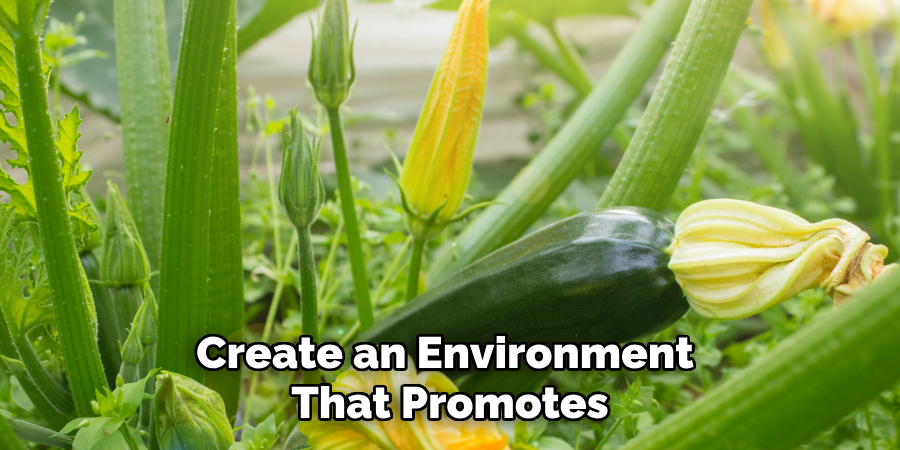
Building Support Structures
When training zucchini to climb, it is important to provide proper support structures. One option is to build your own trellis using materials such as bamboo stakes or wooden poles. These can be arranged in a ladder-like formation for the zucchini vines to latch onto as they grow.
If you prefer a store-bought solution, there are a variety of trellises and supports available. These can range from simple stakes to more elaborate metal frames specifically designed for climbing plants. Consider the size and weight of your zucchini plants when selecting the appropriate support.
DIY options allow for customization and can be cost-effective, while store-bought structures offer convenience and sometimes additional features like adjustable height or expandability.
Table:
| Type | Description |
|---|---|
| Bamboo stakes | Can be arranged to create a ladder-like formation for vines to climb on. |
| Wooden poles | Sturdy option for building a custom trellis. |
| Metal frames | Store-bought structures designed specifically for climbing plants. |
Whether you choose to DIY or purchase, providing the right support will ensure your zucchini plants can climb and thrive.
Planting And Seeding Techniques
When training zucchini to climb, it is important to pay attention to proper planting and seeding techniques. Begin by ensuring that the zucchini seeds are spaced adequately and planted at the correct depth. For climbing varieties, it is recommended to space the seeds 3-4 feet apart to allow enough room for the vines to spread. Plant the seeds about 1 inch deep in well-drained soil.
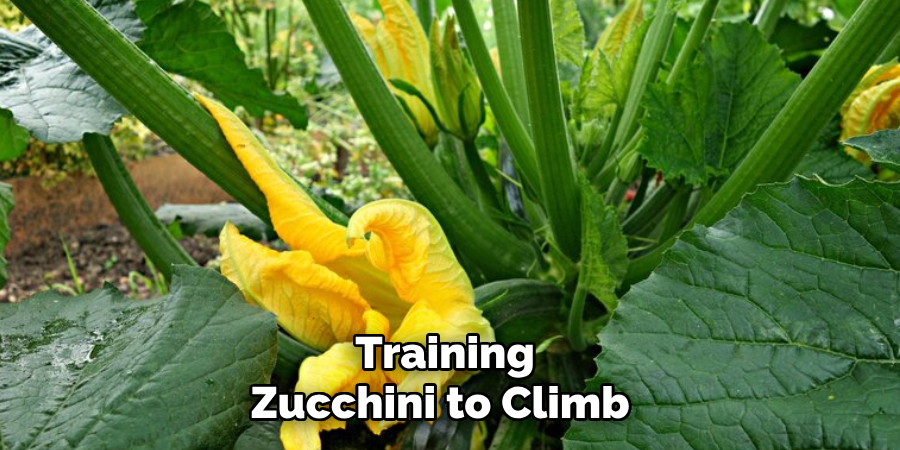
Transplanting considerations are also crucial when it comes to climbers. If you choose to transplant zucchini seedlings, make sure to do so when they have developed a strong root system and are about 3-4 inches tall. Gently loosen the soil around the seedlings and carefully lift them, being mindful not to damage the roots. Plant the seedlings in a prepared hole, ensuring that the soil level matches their previous depth.
Introducing Zucchini To The Support Structure
Training zucchini to climb is a great way to maximize your garden space and improve air circulation for the plants. When introducing zucchini to the support structure, there are a few techniques you can use to gently guide and secure the young plants.
Firstly, **choose a sturdy support structure** such as a trellis or a cage to ensure it can withstand the weight of the growing zucchini. **Secure the structure firmly** in the ground to prevent it from toppling over.
When the zucchini plants are still young, **tie the main stem** to the support structure using soft garden twine or plant ties. Be careful not to tie it too tightly to avoid damage to the stem.
As the zucchini plant grows, **guide the lateral branches** by gently training them along the support structure. **Use plant ties or twine** to secure the branches to the structure at regular intervals. This helps the plant to grow upward rather than sprawling on the ground.
Throughout the training process, **monitor the plant’s growth** and adjust the ties as needed. **Regularly check for any signs of damage** or constriction caused by the ties, and reposition or loosen them to avoid harming the plant.
Remember, **gentle and careful training** is essential to ensure the zucchini plants climb successfully without any harm. Following these techniques will help you train your zucchini to climb and enjoy a more productive and organized garden.
Diligent Pruning And Tying Techniques
Pruning and tying techniques are essential for training zucchini to climb. By employing diligent pruning strategies, you can encourage upward growth and prevent tangling. Regularly remove lateral branches and suckers to focus the plant’s energy on vertical growth. Trim any damaged or diseased leaves to promote plant health and air circulation. Tying methods are crucial for securing zucchini vines to the support structure.
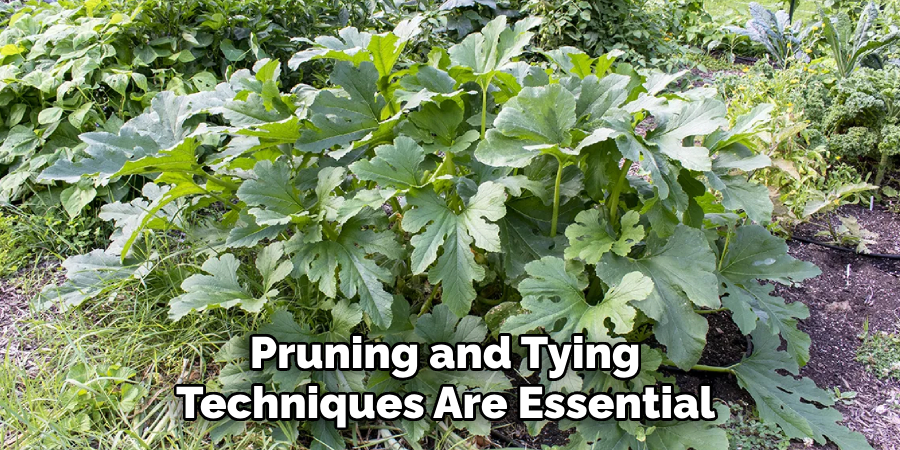
Use soft materials such as garden twine or strips of fabric to avoid damaging the delicate vines. Attach the vines loosely to the support structure, allowing room for growth while still providing stability. Regularly check the ties and adjust them as needed to prevent constriction. Training zucchini to climb not only saves space but also makes for easier harvesting and better airflow, reducing the risk of disease. With proper pruning and tying techniques, your zucchini plants will thrive and produce abundant harvests.
Supporting Heavy Fruits
When training zucchini plants to climb, it is important to address the issue of supporting heavy fruits. The weight of the zucchini fruits can cause strain on the plant and lead to bending or breakage. This can be mitigated by implementing various techniques. One effective method is to use netting or bags to support larger zucchinis. These can be placed underneath the fruit as it grows, providing a supportive base.
The netting or bags should be strong enough to hold the weight of the fruit and allow it to continue growing without hindrance. This technique helps distribute the weight of the fruit and reduce the strain on the plant. By employing such methods, gardeners can ensure that their zucchini plants remain healthy and productive throughout the growing season.
Watering And Fertilizing Climbing Zucchini
Proper watering and fertilizing techniques are crucial for training climbing zucchini. Overwatering or underwatering can have detrimental effects on the plant’s growth and fruit production. To avoid these issues, it is important to follow a few guidelines:
- Watering: Provide consistent moisture to the zucchini plants, ensuring that the soil is neither too wet nor too dry. Regularly check the moisture levels by sticking your finger into the soil up to the first knuckle. If it feels dry, it’s time to water. Avoid waterlogging the soil, as it can lead to root rot. A deep watering once a week is generally sufficient for climbing zucchini.
- Fertilizing: Climbing zucchini requires adequate nutrients to thrive. Begin by preparing the soil with organic matter before planting. As the plants grow, apply a balanced vegetable fertilizer every 4-6 weeks. This will provide the necessary nutrients for healthy growth and optimal fruit production.
Remember to monitor your plants closely, observing any signs of distress or nutrient deficiencies. Adjust your watering and fertilizing practices accordingly to ensure successful training of climbing zucchini.
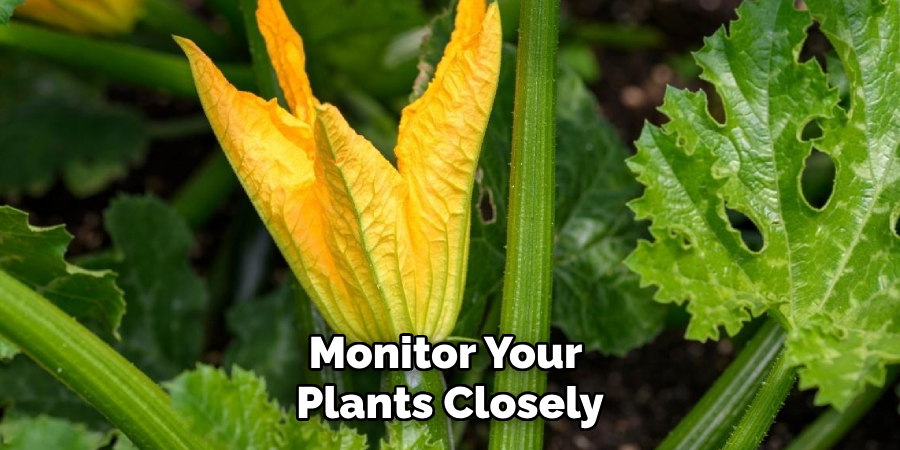
Managing Pests And Diseases
Common pests and diseases that affect climbing zucchini need to be managed effectively to ensure successful growth. Organic pest control methods and disease prevention are key to maintaining healthy zucchini plants.
| Pest | Prevention | Treatment |
|---|---|---|
| aphids | Regularly inspect plants Introduce beneficial insects Avoid over-fertilization | Prune affected leaves Use organic insecticidal soap |
| powdery mildew | Ensure proper air circulation Remove infected leaves Water at the base of plants | Apply neem oil spray Use natural fungicides |
| squash bugs | Remove debris from the garden Cover plants with row covers | Handpick and remove bugs Release predatory insects |
By implementing these organic pest control methods and disease prevention strategies, you can minimize the impact of pests and diseases on your climbing zucchini plants. Regular monitoring and prompt action are crucial for maintaining the health and productivity of your zucchini crop.
Harvesting Climbing Zucchini
Harvesting climbing zucchini is an exciting part of growing your own vegetables. Knowing the signs of readiness for harvesting ensures that you pick them at their peak and avoid any damage to the plant. Keep an eye out for certain indicators like the size and color of the zucchini. Ideally, they should be around 6 to 8 inches long and have a vibrant green color.
Additionally, check that the skin is firm and free from blemishes, indicating a mature zucchini. When harvesting, it is best to use pruning shears or a sharp knife to carefully cut the zucchini from the vine, avoiding any unnecessary strain on the plant. By following these best practices, you can enjoy a bountiful harvest of delicious climbing zucchini.
Frequently Asked Questions For How To Train Zucchini To Climb
How Do You Get Zucchini To Climb?
To get zucchini to climb, provide a trellis or vertical support for the plants. You can use stakes or a wire mesh to guide the vines and help them grow upward. Prune the lower leaves and side branches to encourage upward growth.
Can You Train Zucchini To Grow Up?
Yes, you can train zucchini to grow upwards. By using a trellis or stakes, gently guide the zucchini vines to grow vertically instead of spreading on the ground. This can save space, increase air circulation, and make harvesting easier.
Do Zucchini Plants Like To Climb?
Yes, zucchini plants like to climb.
What Zucchini Grows Best For Climbing?
The best zucchini variety for climbing is the tromboncino zucchini. It grows well on trellises and vine supports, saving space and allowing for easier harvest. Its long and slender shape makes it perfect for slicing or stuffing.
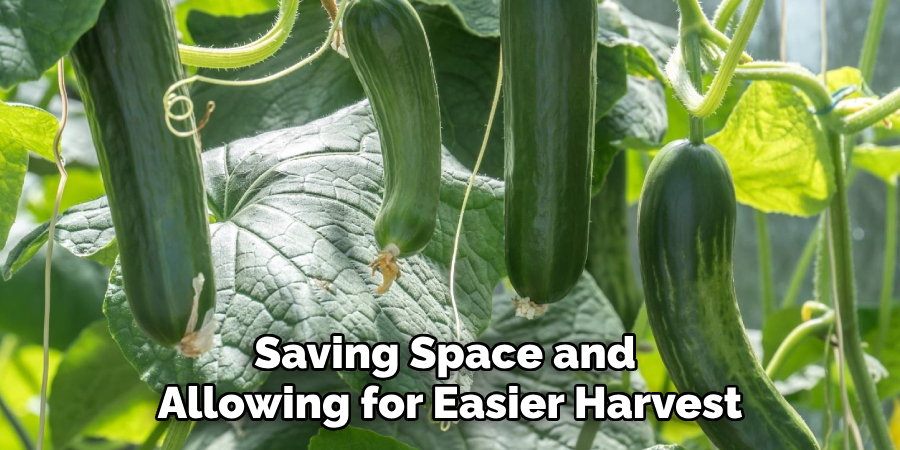
Conclusion
To sum it up, training zucchini to climb is a simple and effective way to maximize your garden space and improve the health and yield of your plants. By implementing the techniques discussed such as providing support structures, using soft ties, and regular maintenance, you can enjoy a bountiful harvest of delicious zucchinis.
So, why not give it a try and elevate your gardening experience to new heights? Happy growing!

